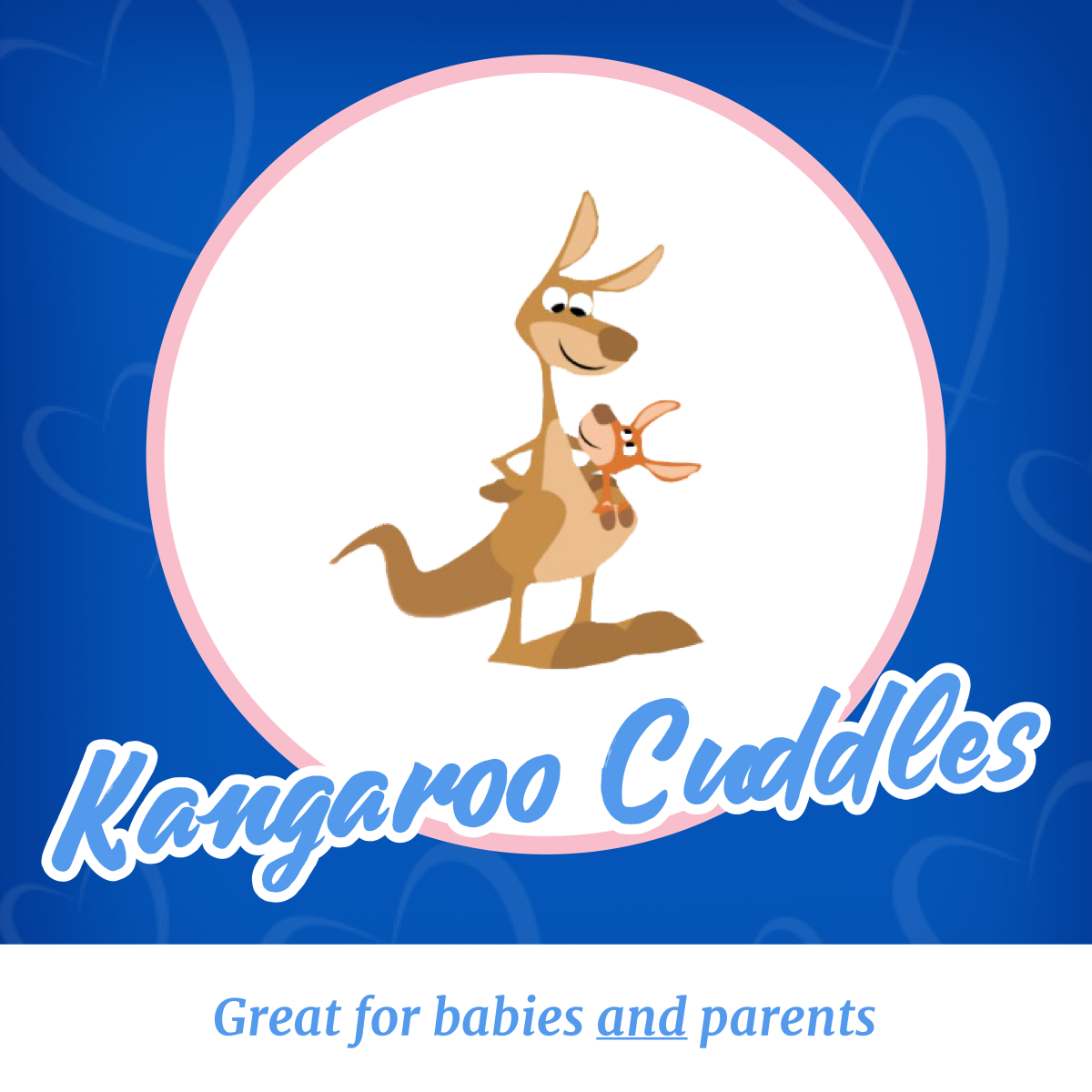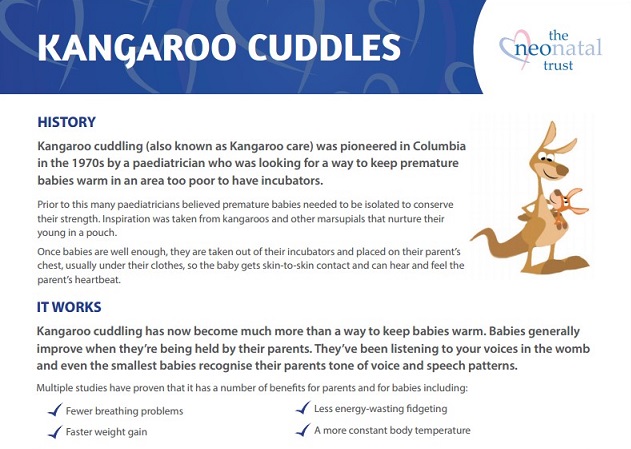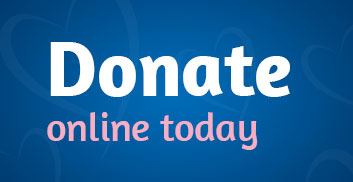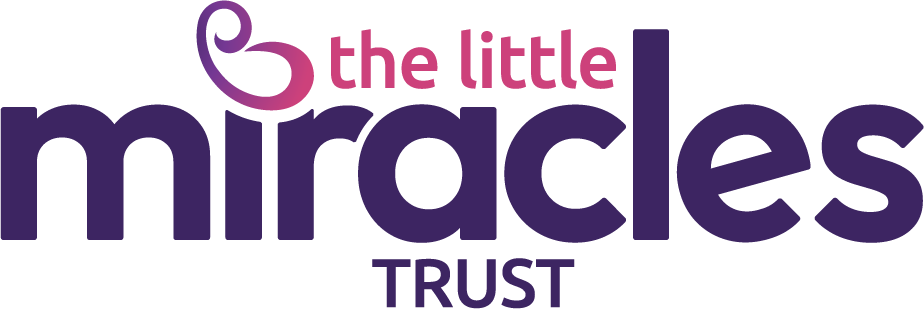 May 15th is International Kangaroo Cuddle Awareness day so there’s no better time to share some information on this practise – one that is great for both babies and parents. If you know someone in a neonatal unit and want to share details, provide them this PDF. This is an example of our resources developed with parents, for parents. You can view some more of these here.
May 15th is International Kangaroo Cuddle Awareness day so there’s no better time to share some information on this practise – one that is great for both babies and parents. If you know someone in a neonatal unit and want to share details, provide them this PDF. This is an example of our resources developed with parents, for parents. You can view some more of these here.
Here’s a couple of very special examples of Kangaroo Cuddles in action:
- When one of her twins was born and pronounced dead, she asked to hold him. 2 hours later he was alive! Read about this great story here
- An Australian couple filmed the adorable moment premature twin babies hold hands while lying on their father’s chest. You can watch the video here
Kangaroo Cuddling was pioneered in Columbia in the 1970s by a pediatrician who was looking for a way to keep premature babies warm in an area that was too poor to have incubators.
In past years many paediatricians believed premature babies needed to be isolated to conserve their strength. Now inspiration has been taken from kangaroos and other marsupials that nurture their young in a pouch. Kangaroo care has now become much more than a way to keep babies warm and multiple studies have proven that it has a number of benefits for parents and for babies (see links below).
Once babies are well enough, they are taken out of their incubators and placed on their parent’s chest, usually under their clothes, so the baby gets skin-to-skin contact and can hear the parent’s heartbeat. This closeness provides a warm and soothing environment and helps the parent feel closer to their baby. Some studies suggest that kangarooing may result in physical benefits, fewer breathing problems, less energy-wasting fidgeting, faster weight gain and a more constant body temperature.
 A lot of babies seem to improve when they’re being held by their parents. They’ve been listening to these voices in the womb and even the smallest babies recognise their families, and babies who are happier tend to do better. It is also suggested that talking to your baby while kangaroo cuddling is especially good as the vibrations through your chest assist.
A lot of babies seem to improve when they’re being held by their parents. They’ve been listening to these voices in the womb and even the smallest babies recognise their families, and babies who are happier tend to do better. It is also suggested that talking to your baby while kangaroo cuddling is especially good as the vibrations through your chest assist.
Note. If you have a very young or sick baby, do ask your nurse if you baby is ready for kangaroo cuddles yet.
 The benefits of Kangaroo cuddles are so great and The Little Miracles Trust has played a part in providing maternity chairs in a number of neonatal units across New Zealand. Examples of this support and other ways we help neonatal families can be viewed here.
The benefits of Kangaroo cuddles are so great and The Little Miracles Trust has played a part in providing maternity chairs in a number of neonatal units across New Zealand. Examples of this support and other ways we help neonatal families can be viewed here.
If you wanted to help us provide more support like this, you can donate here.
For further details of the history and the benefits of kangaroo cuddles, check out these links:
http://journals.lww.com/advancesinneonatalcare/Fulltext/2008/06001/Kangaroo_Care.1.aspx
http://preemies.about.com/od/parentingyourpreemie/a/Kangaroo-Care.htm
http://phenomena.nationalgeographic.com/2013/10/10/kangaroo-mothers-and-the-power-of-touch/
